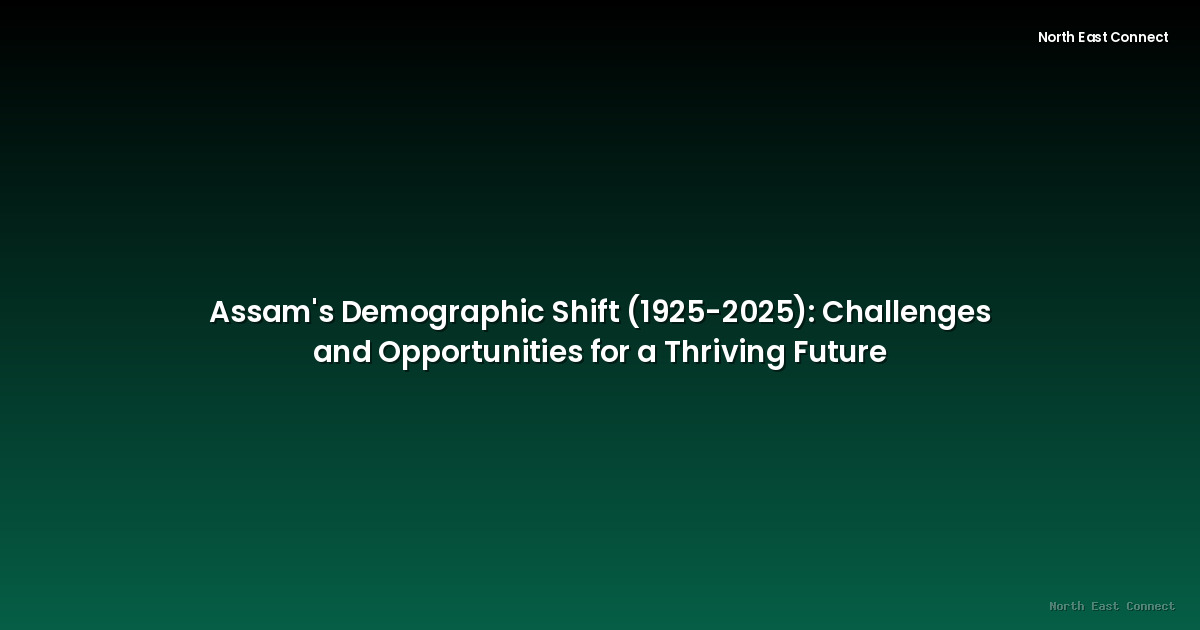2025-08-27 · News
Assam, a northeastern state in India, has experienced significant demographic changes over the past century, a transformation reflected in its population dynamics, economic landscape, and social fabric. Understanding these shifts is crucial for charting a course towards a prosperous and inclusive future for the state. This analysis examines the key demographic trends from 1925 to 2025, highlighting both the challenges and opportunities presented.
Population Growth and Distribution: The population of Assam has witnessed substantial growth since 1925. While precise figures for 1925 may be difficult to obtain with complete accuracy due to limitations in data collection methodologies of that era, subsequent census data reveals a consistent upward trend. This growth has been accompanied by shifts in population distribution, with increasing urbanization and migration from rural to urban areas. This movement has placed strain on urban infrastructure and resources, necessitating careful urban planning and resource management.
Migration Patterns: Internal migration within Assam, and migration to and from neighboring states, significantly shapes the demographic landscape. Factors such as employment opportunities, access to education, and infrastructural development influence these patterns. Understanding the causes and consequences of these movements is important for effective policymaking. For instance, the influx of migrants from other states presents both opportunities (in terms of skill sets and economic contributions) and challenges (in terms of potential strain on resources and social integration).
Socio-Economic Implications: The demographic changes have profound socio-economic consequences. A young population presents an opportunity for economic growth through a large workforce. However, providing adequate employment opportunities for this expanding workforce is crucial to prevent unemployment and social unrest. Furthermore, ensuring access to quality education and healthcare for all segments of the population is paramount for fostering human capital development and reducing inequalities.
Challenges: Assam faces various challenges related to its demographic transformation. These include managing rapid urbanization, ensuring equitable distribution of resources, addressing unemployment, improving access to quality education and healthcare, and promoting social harmony amongst diverse population groups. The state needs effective policies and targeted interventions to address these challenges.
Opportunities: Despite the challenges, Assam possesses significant opportunities to leverage its demographic dynamics for positive growth. A young, growing population can fuel economic activity and innovation. Investment in education, skill development, and infrastructure can create a competitive workforce and attract further investment. Policies promoting inclusivity and social harmony can unlock the full potential of the diverse population.
Pathways to a Prosperous Future: To build a prosperous and inclusive future, Assam needs a multi-pronged strategy. This should include:
Targeted investment in infrastructure: This includes improving transportation, communication, and energy infrastructure to support economic growth and improve living standards.
Education and skill development: Investing in quality education and vocational training is crucial for creating a skilled workforce that can compete in the global economy.
Sustainable development: Implementing sustainable development practices is essential for balancing economic growth with environmental protection and resource conservation.
Inclusive policies: Policies that address the needs of all segments of the population, particularly marginalized communities, are vital for achieving social harmony and equitable development.
* Effective governance: Strong and transparent governance is essential for ensuring that policies are implemented effectively and resources are used efficiently.
By carefully addressing the challenges and capitalizing on the opportunities presented by its demographic transformation, Assam can pave the way for a prosperous and inclusive future for all its citizens.







